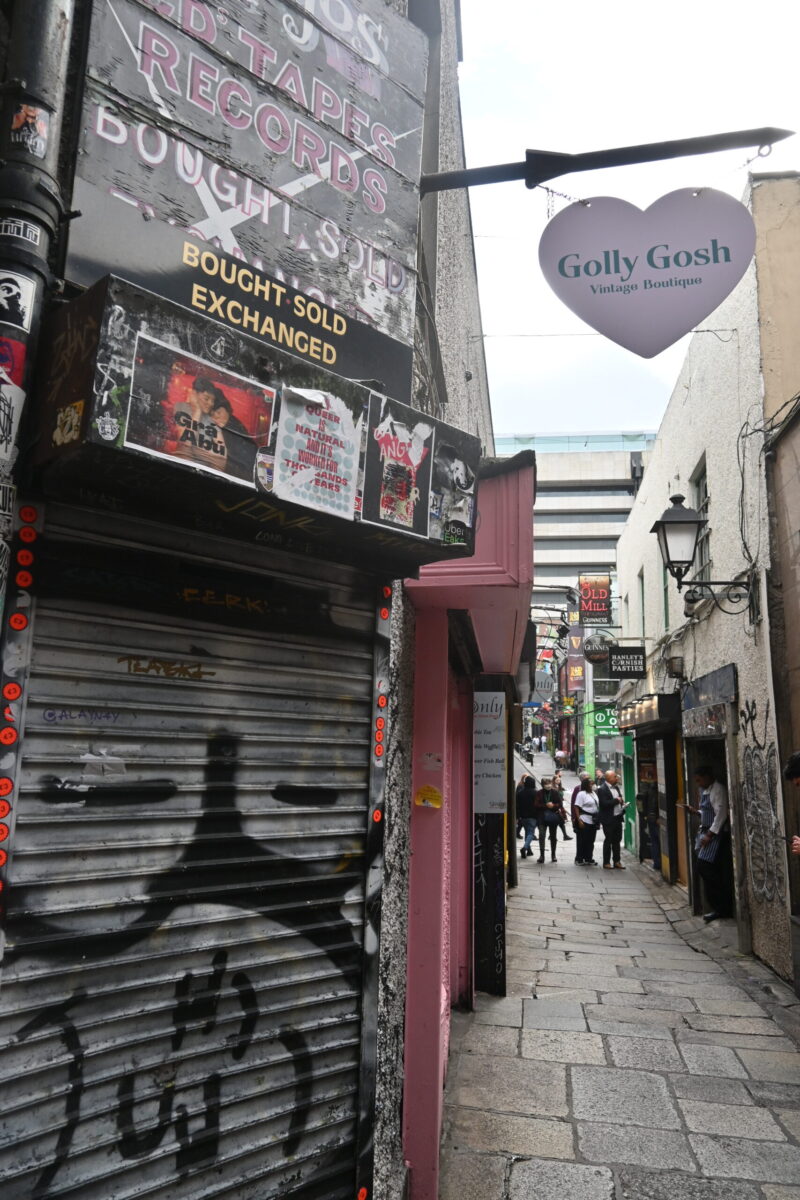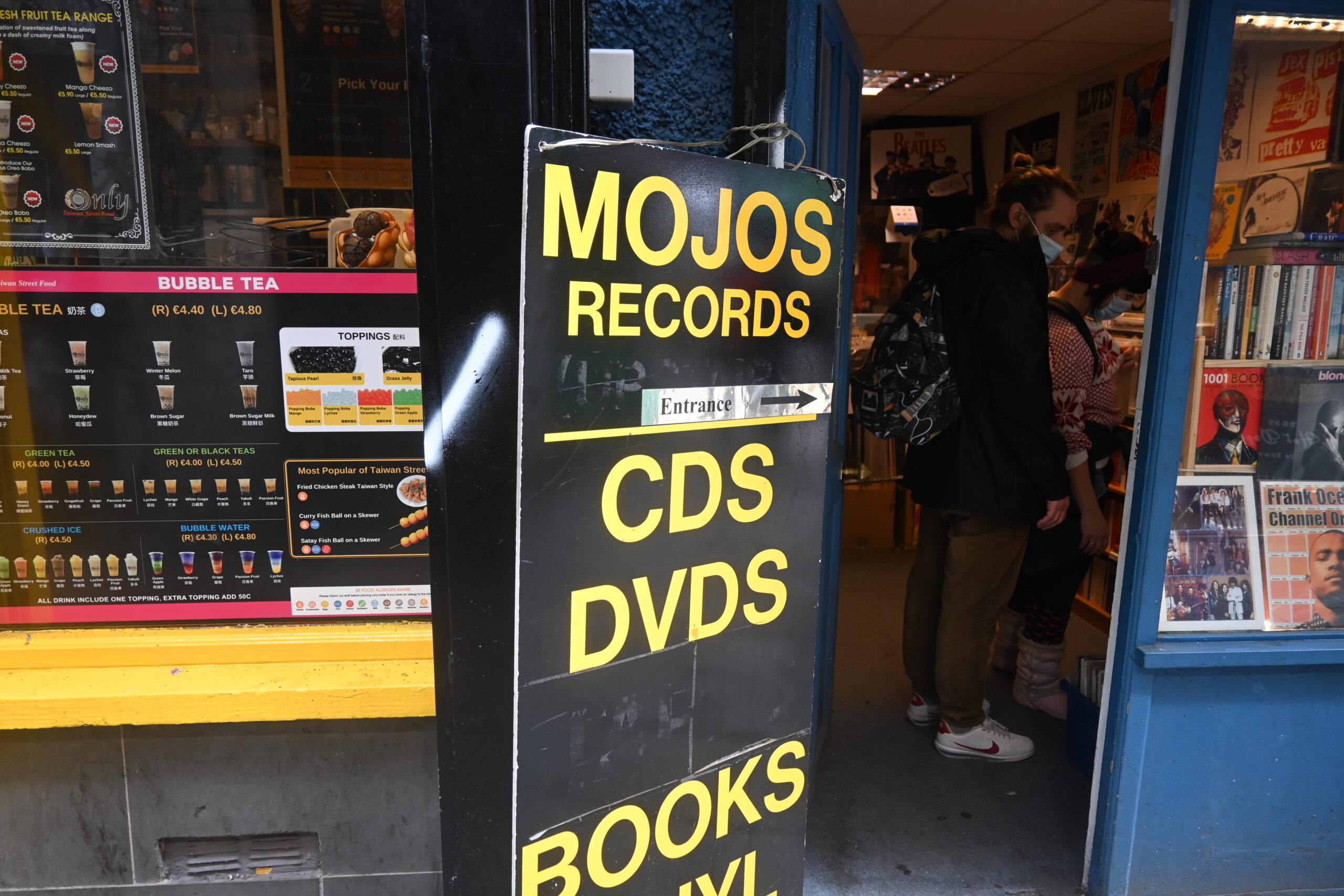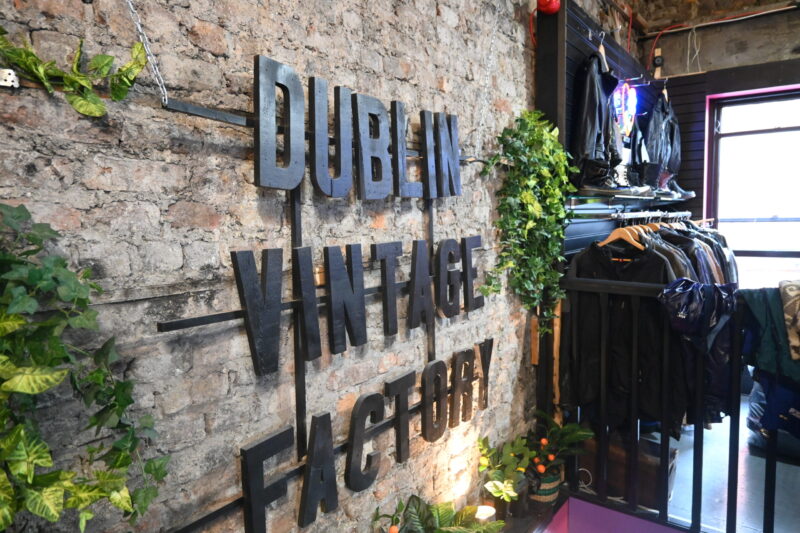
Merchant’s Arch is an iconic piece of Dublin city architecture. A near-fantastical portal – or so it seems as a child – between the bustling Ha’penny Bridge and tourist-thronged Temple Bar, it has long-held its intrigue as a liminal space in our fair city. The 1821 structure has been captured on canvas by many talented hands over the years, including William Orpen and Tom Cullen and even makes an appearance in Ulysses, when Leopold Bloom goes looking for a certain type of book for his darling Molly – but listen, we’ll say no more about that. As home to one of the only two 19th-century guild halls still standing in Dublin, there was widespread worry, when the news broke that the arch itself was under threat. Thankfully, we have since learned that this is not the case.
However, it remains true that an Bord Pleanála has approved planning permission for a boutique hotel and restaurant to be built at 1-4 Merchant’s Arch, Temple Bar. This will consist of a three-storey over ground floor building, which is set to become a hotel and further basement building, which, according to current plans, will be home to a restaurant. For anyone waiting for the catch, don’t worry – it’s coming. This development necessitates the demolition of the existing two-storey over basement building, which is currently home to two vintage clothes stores, a waffle shop, a record store and technology repair store. The quaint shops and inimitable atmosphere of Merchant’s Arch are set to be no more, and if the march from Smithfield Square on earlier this month is anything to go by, Dubliners aren’t happy about it.
With an online petition opposing the development standing at 52,981 signatures, and Irish comedian Dara O Briain and singer-songwriter Imelda May among the vocal opponents of the plans, it’s clear that this development has really enraged the general public. For many Dubliners who have stood by watching the commercialisation (or “hotelification”) of the city accelerate in recent years, this was, perhaps, the last straw.
So, what about 1-4 Merchant’s Arch are people so reluctant to part with? Between classes, I take a walk down the coveted cobblestones to catch a glimpse of the magic soon set to expire. The narrow street and uneven paving speak to a time gone by, contrary to the wide, ventilated spaces that have consumed our move out of lockdown and back into society. The spatial awareness required to make headway here however, can’t be overstated. I find myself faltering in attempts to dodge tight-lipped septuagenarians laden with Brown Thomas bags, men in work gear huffing gruffly into mobile phones and too-cool tweens swapping TikTok references. It’s a social sport though, to its credit, presenting each passerby with a cast of characters they’re unlikely to encounter anywhere else.

When I dip inside Mojo Records, Reece Smyth, a fellow customer and recent college graduate, tends to agree with me. “This is probably one of the areas I come to the most in town just because it’s so packed full of different types of people”, he explains. “I love the area and the different shops that it has, compared to the likes of Henry Street and all that, [where] it would only be like big brand shops. Down here, it’s all local shops – you can’t find small record shops like this anywhere.”
As we shuffle to make room for a father and pre-teen daughter who are perusing top tracks from the 1970s, I catch a glimpse of the attraction.
As we shuffle to make room for a father and pre-teen daughter perusing top tracks from the 1970s, I catch a glimpse of the attraction.
When I ask Smyth how he feels about the proposed development, he takes a short pause before answering. “I’ve seen lots of other people saying it on Instagram as well, but I kind of agree with it, that if you keep tearing everything down like this there won’t be much left to see. So it’ll stop tourists from coming to Dublin anyways.”
Sharing a silent goodbye with the man behind the desk, hidden within a mosaic of band posters and vinyl covers, I make my way to Dublin Vintage Factory. Coolness radiates from this place, with each member of staff exuding a chilled-out affability. Dressed floor-to-ceiling in resurging sustainable trends, even the most successful head-turner on Grafton Street would blend into this sartorial paradise.
According to secondary-school student Gutjera Pukelyte, Dublin Vintage Factory has become a popular hang-out spot for conscientious young people. “I come here really often with my friends and we walk around here and just admire [all the clothes]”, she oozes. Having grown up in a generation that is slowly shrugging off the clutches of Boohoo and Pretty Little Thing (and, honestly, more power to them), Pukelyte is in her element browsing through racks of the best pre-loved garments. “Vintage shops carry lots of, you know, old stuff, and they just make it new – they just rewear it and then reuse”, she outlines, before adding: “It’s not really fair to get rid of shops like that”.
Behind a mannequin with better hair than me, I find recent Dublin City University graduate Dylan McClory, who also weighs in on the conversation. “It’s unfortunate because it’s kind of erasing that last bit of culture that places have left”, he begins. “And I think the country’s already tough enough for young people as it is but somehow, every single decision they seem to make seems to not be in our favour … There’s only a certain amount of places I want to go to when I have my days off, and they’re just threatening to erase [them] … It’s just really, really sad.”

Before I leave this grungy wonderland, I stop into Only Bubble Waffle & Bubble Tea and stand idly in a queue of side-fringed pre-teens, a few scruffy students escaping online college and a stressed-looking woman sporting a slicked-back bun, buying six bubble teas “to take back to the office”. Between sugar-rush chatter and lunchtime traffic, I don’t get the chance for a chinwag, but instead spend some silent moments surveying the amorous amateur graffiti scrawled into every flat surface in the space. Initial-official best friends “4 Liofe” declare their love for each other in blue ballpoint pen, while some unfortunate souls suffer a slagging engraved in hardwood. All the while, “Megan and John 4eva” looks as fresh as the day, or night, it was carved. And perhaps Megan and John weren’t forever. Maybe they don’t even know each other anymore. Maybe they were a one-night stand, or a failed Tinder date. Or maybe they’ve a kid, two cats and a mortgage in the suburbs.
Whatever the case, a part of their story is carved into the very furniture of this little bubble tea and waffle shop in Merchants Arch, along with the stories of so many other once-upon-a-time Dubliners that the city doesn’t feel ready to erase.






